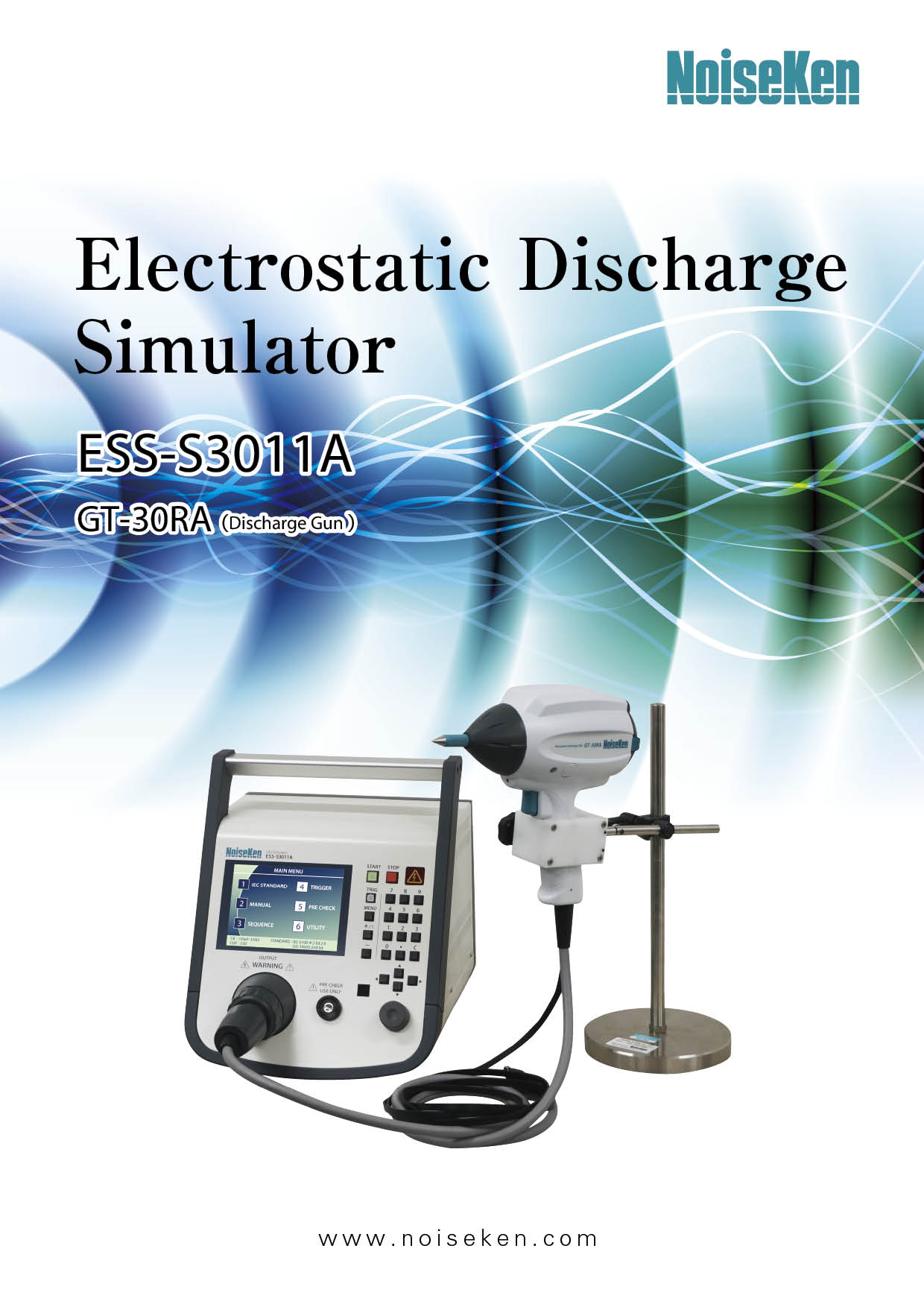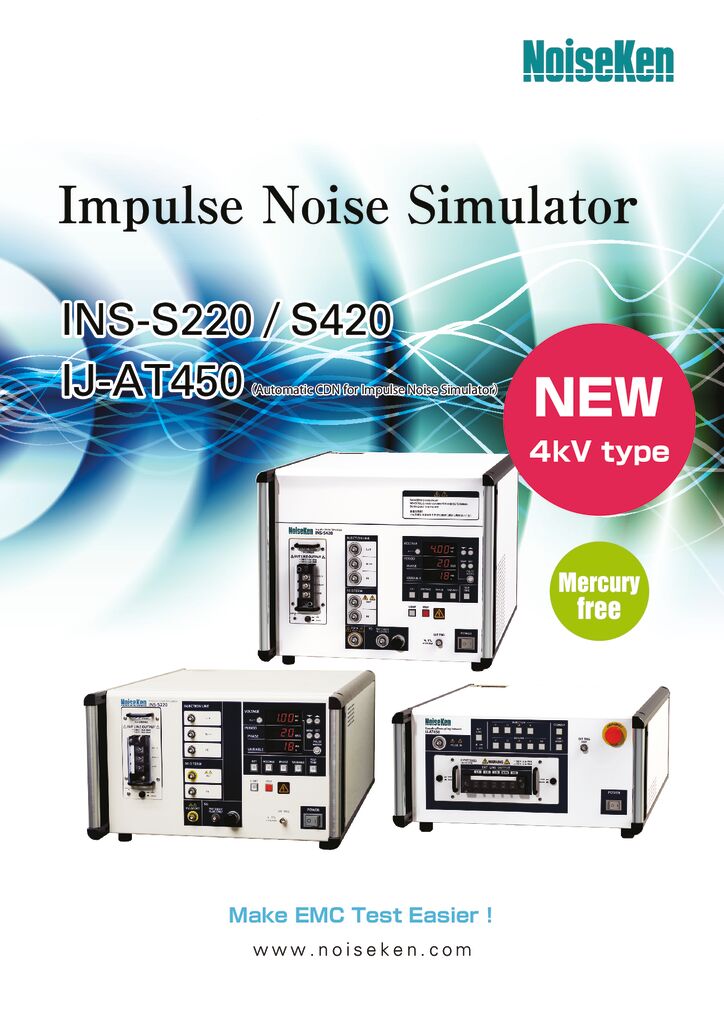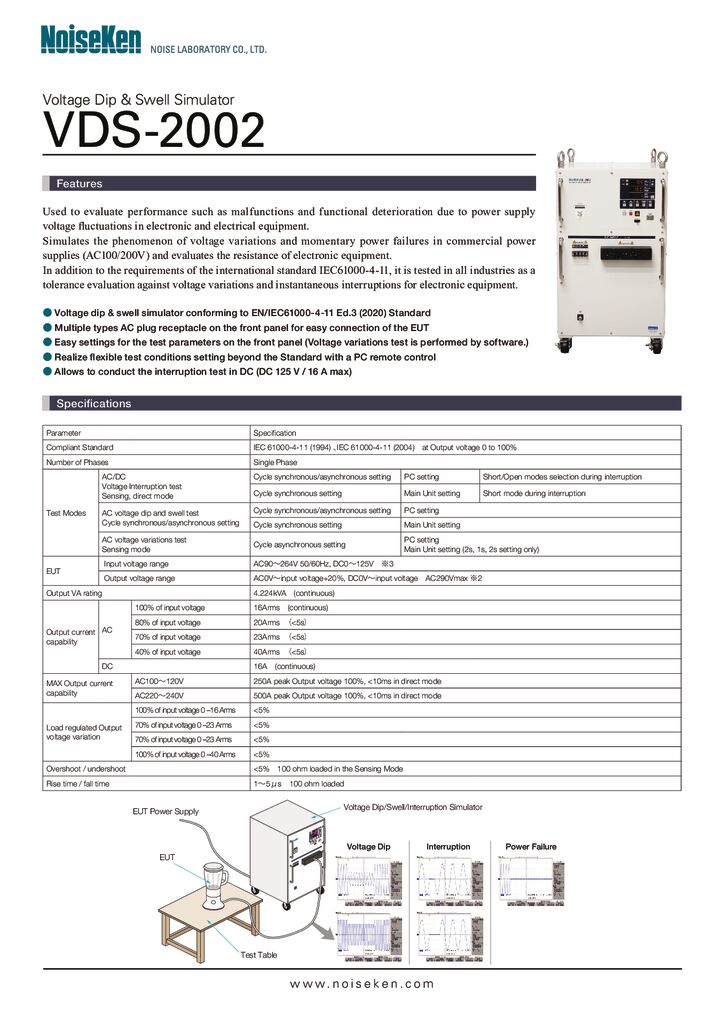What are the differences between the IEC61000-4-5 and JEC-210/222 standards? What are the differences between each compliant product LSS-15AX/F02/F03 series and LSS-700 series?
NoiseKenThe followings are some important points to be highlighted comparing the both products.
Unlike the 1.2/50 uS combination waveform generator defined in the IEC standard, the 1.2/50 uS and 8/20 uS waveforms are generated by two distinct circuits in the LSS-700 series simulators. The output impedance value for the IEC 61000-4-5 1.2/50 uS generator is 2 ohm. The JEC standards are basically for high voltage impulse withstand testing thus do not have any value specified for its source impedance value.
However, Noiseken specifies 6 ohm impedance for their LSS-700 series products. The LSS-15AX/F02/F03 series simulators generate 7.5kA short-circuit current (15kV ÷2 ohm=7.5kA) against 15kV test voltage setting. In that instant, 8/20uS waveform is obtained.
The LSS-700 series simulators, when set to 20kV, generate 3.3kA short-circuit current (20kV/6 ohm). For 8/20 uS short circuit current generator circuitry in the LSS-700 series, the source impedance of 5 ohm is adopted, where setting at 4kA generates 20kV open circuit voltage (4kA x 5 ohm =20kV) for open circuit condition.
The JEC standards do not define powered testing for the EUT. By the nature of the standard specifying impulse withstand voltage capability, powered testing is not considered. The Noiseken LSS-700 series simulators have capability to test the EUT operating on AC, though.




